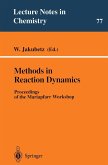This work had its beginnings in the early 1980s at the University ofWollongong, with significant contributions from Dr. Margret Hamilton, Professors Peter G. Burton and Greg Doherty. The emphasis was to develop computer code to solve the nuclear Schrodinger problem. For bent triatomic molecules the project was fmally realized at the University of Newcastle a decade or so later, with the contribution from Ms. Feng Wan g. Aspects of this work are now taught in the quantum mechanics and electron spectroscopy courses at The University of Newcastle. Even now "complete" ab initio solutions of the time-independent SchrOdinger equation is not commonplace for molecules containing four atoms or more. In fact, when using the Eckart-Watson nuclear Hamiltonian a further restriction needs to be imposed; that is, the molecule is restricted to undergoing small amplitudes of vibration. This Hamiltonian is useful for molecules containing massive nuclei and moreover, has been extremely useful in interpreting the rovibrational spectra of small molecules. Nevertheless, a number of nuclear Hamiltonians that do not embed an equilibrium geometry have become well established and are extremely successful in interpreting rovibrational spectra of floppy molecules. Furthermore, solution algorithms vary greatly from research group to research group and it is still unclear which aspects will survive the next decade. For example, even for a triatomic molecule a general form of a potential function has not yet been uncovered that will generally interpolate with accuracy and precision ab initio discrete surfaces.
Dieser Download kann aus rechtlichen Gründen nur mit Rechnungsadresse in A, B, BG, CY, CZ, D, DK, EW, E, FIN, F, GR, HR, H, IRL, I, LT, L, LR, M, NL, PL, P, R, S, SLO, SK ausgeliefert werden.









